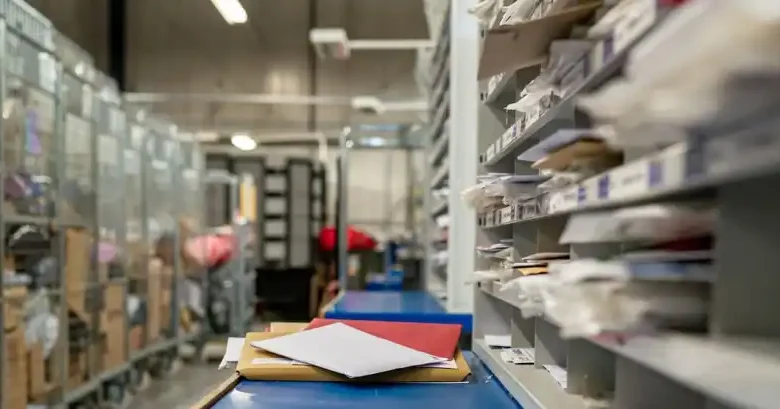The Ultimate Guide to Sending Letters: Weights, Forwarding, and Mail Efficiency

Despite the digital age, mailing physical letters remains a necessity for businesses, government agencies, and even individuals. Whether you’re sending legal documents, business correspondence, or personal notes, understanding the logistics of mailing—especially weight and forwarding—is crucial to saving both time and money. In this guide, we’ll cover everything you need to know, from how much a letter weighs to finding the best mail forwarding service.
Why Physical Mail Still Matters
While emails, instant messages, and cloud-based file sharing have become the norm, physical mail continues to be relevant. Businesses often rely on mail for sending invoices, contracts, marketing materials, and official communications. Physical documents convey professionalism, are harder to ignore, and sometimes are legally required.
For individuals, sending physical mail such as greeting cards, letters, or important paperwork still plays a vital role in personal and professional communication. Plus, there are situations—like remote work, travel, or relocation—where mail forwarding becomes indispensable.
Before you even think about forwarding mail, though, it’s important to understand what you’re sending and how it’s weighed and measured.
Understanding Letter Weights: Why It Matters
When you send a letter, the cost of postage depends heavily on its weight. A letter that’s just a fraction of an ounce over a limit might incur a higher postage rate or be rejected entirely. Knowing the typical weight of common letters can help you avoid these pitfalls.
So, how much does a letter weigh? A standard #10 envelope (the kind used for business letters) with a single sheet of paper usually weighs around 0.2 to 0.3 ounces. Add more pages or additional materials, and the weight increases. Once your envelope exceeds 1 ounce, you’ll need to add more postage.
Here’s a rough guide:
- 1 sheet of paper in an envelope: ~0.2 – 0.3 oz
- 3 sheets of paper in an envelope: ~0.5 – 0.6 oz
- 5 sheets of paper in an envelope: ~0.8 – 1.0 oz
- 6+ sheets: over 1 oz (requires additional postage)
Being just slightly over the limit can result in delayed or returned mail, so it’s a good idea to weigh your letter before sending—especially when dealing with official documents or time-sensitive materials.
Types of Mail and Weight Categories
The United States Postal Service (USPS) categorizes mail into different types, each with their own size and weight requirements. For letters, the maximum weight is 3.5 ounces. If your mail exceeds that, it’s considered a “large envelope” or “flat,” and a different rate applies.
Knowing which category your mail fits into ensures:
- You’re not underpaying postage
- Your mail reaches its destination on time
- You avoid extra fees or returned mail
Postage calculators and digital scales are helpful tools to double-check weights and postage needs before heading to the post office.
International vs. Domestic Letter Weights
International mail often follows different rules. For example, the USPS allows a standard international letter to weigh up to 3.5 ounces as well, but the rates start higher. Moreover, international mail may require customs forms or additional packaging, which can increase the total weight and affect delivery times.
If you’re sending mail abroad frequently, it’s especially crucial to streamline your process and understand weight limits to avoid delays and lost packages.
What Is Mail Forwarding?
Mail forwarding is a service that reroutes your mail from one address to another. This is useful if you:
- Are traveling or living abroad
- Run a business remotely
- Move frequently due to work
- Have a virtual office
Instead of missing important mail, you have it forwarded to a secure location or scanned and emailed to you. It’s like having a virtual mailbox wherever you are.
But not all mail forwarding services are created equal. The key is choosing a provider that offers reliability, security, and flexibility.
Choosing the Best Mail Forwarding Service
If you’re looking for the best mail forwarding service, consider the following factors:
- Security – How does the provider handle and store your mail? Look for secure facilities and encrypted digital forwarding options.
- Flexibility – Can you choose how your mail is forwarded—digitally or physically? Can you schedule shipments?
- Cost – Does the service charge per letter or offer flat monthly rates? Are there hidden fees for storage or additional addresses?
- Scanning Services – Some services offer mail scanning so you can read your mail online.
- Customer Support – Reliable, responsive customer service makes a huge difference if something goes wrong.
Companies like PostGrid offer modern, full-service mail forwarding solutions for businesses and individuals, complete with scanning, mailroom automation, and compliance tracking. With such services, you gain full control over your incoming and outgoing mail—no matter where you are.
Benefits of Using a Mail Forwarding Service
Whether you’re a digital nomad or a business owner operating across multiple locations, a mail forwarding service can save you time and hassle. Here are some key advantages:
- Stay Organized: Centralize your mail in one location, even if you’re constantly on the move.
- Reduce Paper Clutter: Digitally scan and archive important documents.
- Improve Security: Protect sensitive mail from being lost or stolen.
- Scale Your Business: Easily manage client communication, invoices, and deliveries from any location.
Mail forwarding services can also be integrated with other tools—like CRMs or accounting platforms—allowing for a more streamlined communication workflow.
Combining Letter Weight Knowledge with Forwarding Services
Let’s put it all together. Understanding how much a letter weighs ensures you don’t waste time or money on incorrect postage. Pair that knowledge with the best mail forwarding service, and you create a reliable system for both sending and receiving mail—no matter where life takes you.
Businesses especially benefit from combining these two areas of knowledge. A smart mail strategy reduces operational costs, boosts professionalism, and ensures no opportunity or communication is missed due to postal errors.
Final Thoughts
In a world increasingly dominated by digital communication, physical mail still has a vital place. Whether you’re sending contracts, client communications, or heartfelt letters, knowing the ins and outs of mailing can make a big difference.
By understanding letter weights and choosing the right mail forwarding service, you can ensure your mail is always sent correctly, received promptly, and handled securely. Whether you’re an individual, a startup, or a large enterprise, taking control of your mail process is a simple yet powerful way to improve your operations.
So the next time you prepare to send a letter, remember—check the weight and make sure your forwarding system is up to date. It could save you time, money, and more than a few headaches.





